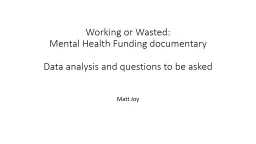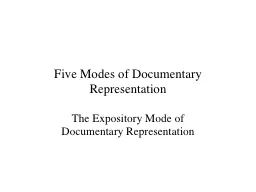PPT-Working or Wasted: Mental Health Funding documentary
Author : trish-goza | Published Date : 2018-10-22
Data analysis and questions to be asked Matt Joy NHS Report 201617 One Year On Indications are that some good progress is being made Mental Health Five Year Forward
Presentation Embed Code
Download Presentation
Download Presentation The PPT/PDF document "Working or Wasted: Mental Health Funding..." is the property of its rightful owner. Permission is granted to download and print the materials on this website for personal, non-commercial use only, and to display it on your personal computer provided you do not modify the materials and that you retain all copyright notices contained in the materials. By downloading content from our website, you accept the terms of this agreement.
Working or Wasted: Mental Health Funding documentary: Transcript
Download Rules Of Document
"Working or Wasted: Mental Health Funding documentary"The content belongs to its owner. You may download and print it for personal use, without modification, and keep all copyright notices. By downloading, you agree to these terms.
Related Documents











![[logos] A WORKSHOP [Presenter]](https://thumbs.docslides.com/719690/logos-a-workshop-presenter.jpg)
![[logos] A WORKSHOP [Presenter]](https://thumbs.docslides.com/726182/logos-a-workshop-presenter-1562402.jpg)

